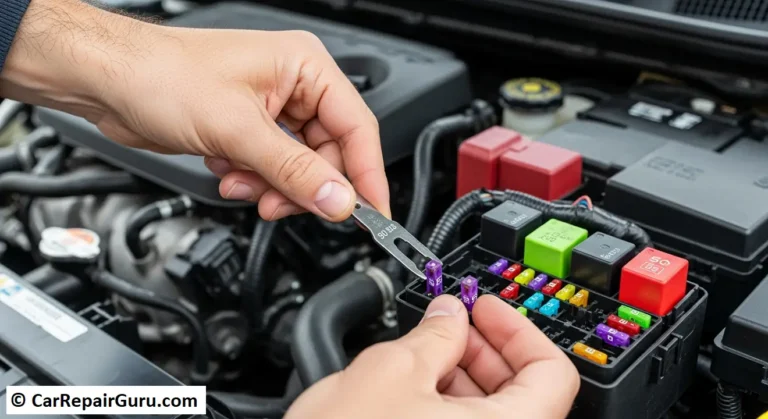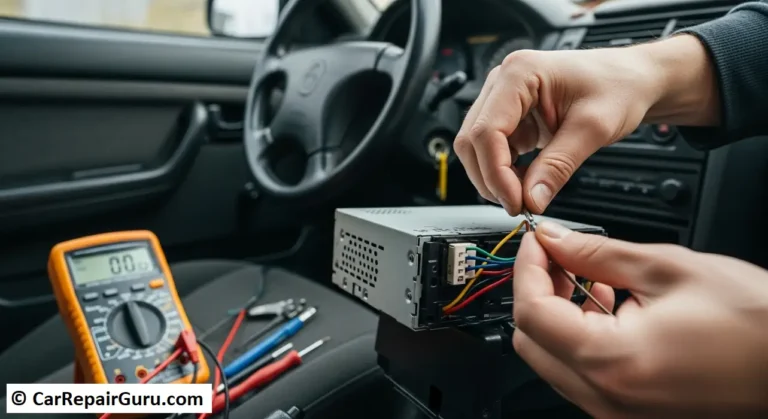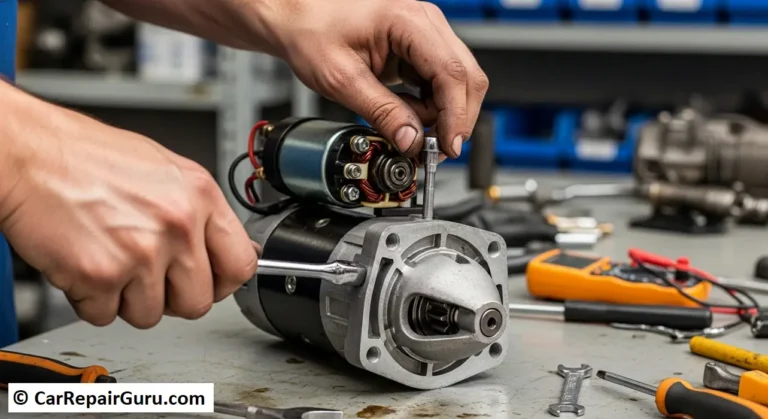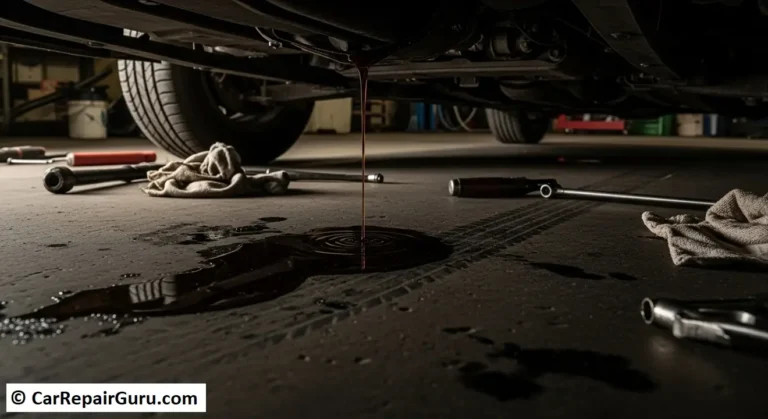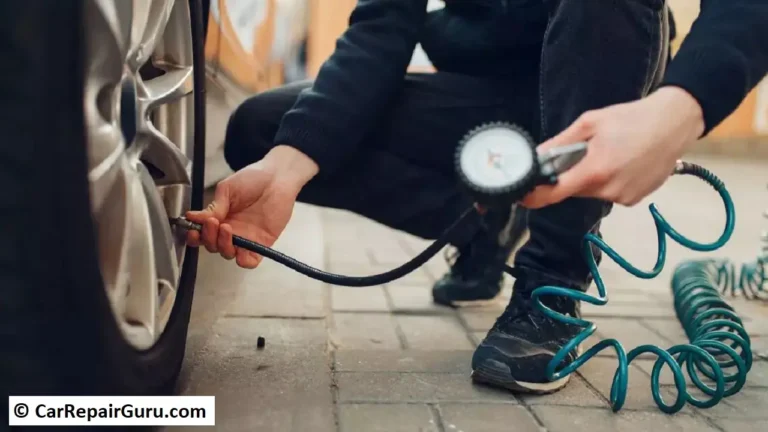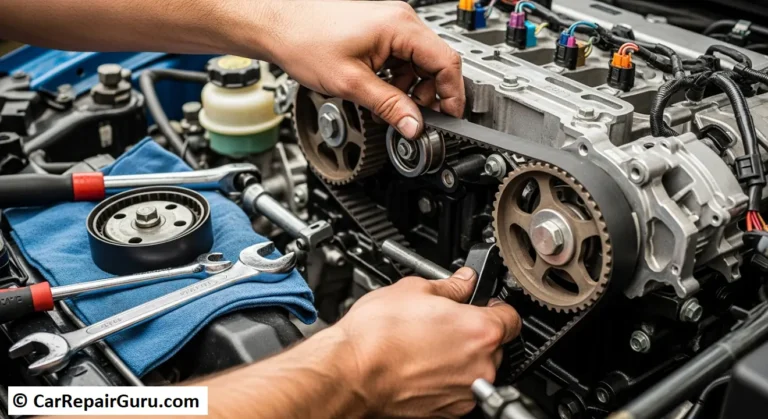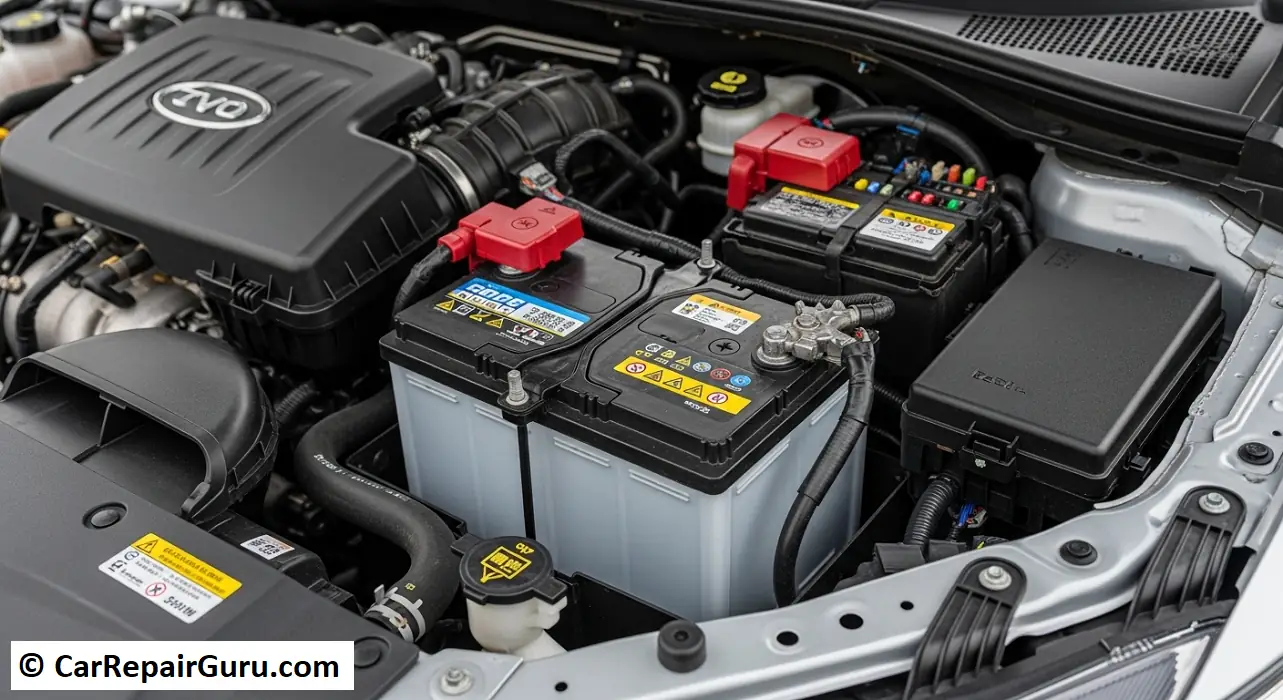
Let’s be honest—you probably don’t think about your car battery until the day it fails you. It’s usually a cold morning, you’re already running late, and you’re met not with the roar of an engine, but with a dreaded, frantic click-click-click. Or worse, total silence. That small, heavy box under the hood is one of the most critical components of your vehicle, and when it dies, everything comes to a halt.
But it doesn’t have to be a mystery. Understanding your car battery is the first step toward preventing that morning nightmare. This guide will turn you into a confident car owner, equipped to spot problems before they start, choose the right replacement, and even tackle the job yourself.
From the different types of car batteries on the market to the subtle signs of failure and maintenance tips that can extend its life, we’re covering everything. Let’s get you powered up.
What is a Car Battery and How Does It Work?
Think of your car battery as the spark of life for your vehicle. It’s a small, self-contained power plant that delivers the electrical jolt needed to get everything moving. But its job doesn’t stop there.
The Three Core Functions:
- Starting the Engine: This is its most famous job. The battery provides a massive burst of electrical energy to the starter motor, which cranks the engine to life.
- Powering Electronics: When the engine is off, the battery powers your car’s electrical systems—the clock, radio presets, security alarm, interior lights, and more.
- Stabilizing Voltage: While the car is running, the alternator generates power to run the electronics and recharge the battery. The car battery acts as a stabilizer, absorbing voltage spikes and ensuring a steady, reliable flow of electricity to sensitive components like your car’s computer.
A Simple Look Inside – Lead, Acid, and a Chemical Reaction
At its core, a standard car battery is a marvel of simple chemistry. Inside that plastic box are a series of lead plates submerged in a mixture of sulfuric acid and water called an electrolyte. A controlled chemical reaction between the lead and the acid generates DC (Direct Current) electricity, which is then sent out through the positive and negative terminals to power your vehicle.
The 4 Main Types of Car Batteries – Which One is Right for You?
Not all car batteries are created equal. Modern vehicles with advanced features demand more power, leading to different battery technologies. Choosing the right one isn’t just a suggestion—it’s essential for your car’s performance and longevity.
Flooded Lead-Acid (or Wet Cell) – The Traditional Standard
This is the battery most of us picture. It’s the workhorse of the industry, known for its reliability and affordable price. The lead plates are fully submerged in a liquid electrolyte.
- Pros: Most affordable option, widely available.
- Cons: Requires occasional maintenance (checking and topping off water levels in non-sealed versions), can leak if tipped over, and is less resistant to vibration.
- Best For: Older vehicles with minimal electronic demands.
Absorbent Glass Mat (AGM) – Power for Modern Demands
AGM batteries are the new standard for most new vehicles. Instead of a free-flowing liquid, the electrolyte is absorbed into fine fiberglass mats packed between the lead plates. This design is a game-changer.
- Pros: Spill-proof, maintenance-free, highly resistant to vibration, recharges faster, and delivers more power for vehicles with high-tech features.
- Cons: More expensive than flooded batteries.
- Best For: Vehicles with start-stop technology, a heavy load of electronics (large touchscreens, heated seats, advanced safety systems), and performance cars.
Enhanced Flooded Battery (EFB) – The Middle Ground
EFB batteries are a step up from standard flooded batteries but a step below full AGM. They are designed to handle more demanding charge-discharge cycles than a standard battery, making them suitable for vehicles with basic start-stop systems.
- Pros: More durable and longer-lasting than standard flooded batteries, less expensive than AGM.
- Cons: Not as powerful or vibration-resistant as an AGM battery.
- Best For: Entry-level vehicles with start-stop functionality but fewer overall electronic accessories.
Lithium-Ion – The High-Performance Option
Primarily found in hybrid and electric vehicles (as the main power source) and some high-performance sports cars (as the starter battery), lithium-ion batteries are incredibly lightweight and powerful.
- Pros: Extremely light, long lifespan, and exceptional performance.
- Cons: Significantly more expensive.
- Best For: High-end performance vehicles and EVs.
7 Telltale Signs of a Bad or Dying Car Battery
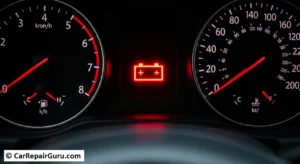
Your car battery usually gives you hints before it completely fails. Learning to spot these signs of a bad car battery can save you from being stranded.
- Slow Engine Crank: When you turn the key or press the start button, the engine turns over sluggishly, sounding like it’s struggling. This is the most common first symptom.
- Clicking Sound on Startup: You turn the key and hear a rapid clicking noise. This means the battery has enough power to engage the starter solenoid, but not enough to turn the engine.
- Dim Headlights & Electrical Issues: Notice your headlights are dimmer than usual, especially when starting the car? This, along with flickering interior lights or a radio that cuts out, points to a weak battery.
- The Battery Warning Light: This dashboard light (often shaped like a battery) is a direct message from your car’s computer that something is wrong with the charging system. It could be the battery or the alternator.
- Visible Corrosion: Pop the hood and look at the battery terminals (the metal posts where the cables connect). If you see a white, blue, or greenish powdery substance, that’s corrosion, which can hinder the flow of electricity.
- Old Age: The average car battery lasts 3 to 5 years. If yours is approaching that age, it’s living on borrowed time, and you should have it tested proactively.
- A Swollen or Bloated Battery Case: If the sides of your battery case are bulging, it’s a sign that it has been damaged by excessive heat or overcharging. This is a serious issue, and the battery should be replaced immediately.
How to Test and Maintain Your Car Battery
A little proactive care can go a long way. You don’t have to be a mechanic to check on your battery’s health and perform simple maintenance to extend its life.
The Multimeter Test – A Step-by-Step Guide
A multimeter is an inexpensive tool that gives you a precise reading of your battery’s voltage. It’s the best way to test a car battery at home.
- Safety First: Make sure your car is off, and wear safety glasses and gloves.
- Set the Multimeter: Turn the dial to “DC Voltage” (look for the symbol V– or a straight line over a dotted line) and select the 20V setting.
- Connect the Probes: Touch the red probe to the positive (+) terminal and the black probe to the negative (-) terminal.
- Read the Voltage (Engine Off):
- 12.6V or higher: Your battery is fully charged and in good health.
- 12.2V to 12.4V: Your battery is partially discharged and should be charged.
- Below 12.2V: Your battery is significantly discharged and may be failing. A deep discharge can cause permanent damage.
Simple Maintenance to Extend Battery Life
- Keep It Clean: Periodically clean any corrosion from the terminals using a wire brush and a mixture of baking soda and water. A clean connection is a good connection.
- Keep It Tight: Ensure the cables are securely fastened to the terminals. A loose connection can prevent the battery from charging properly and may stop your car from starting.
- Take Longer Drives: Frequent short trips don’t give your alternator enough time to fully replenish the battery’s charge. Aim for at least one drive of 20-30 minutes each week.
A Buyer’s Guide – How to Choose the Right Car Battery
When it’s time for a replacement, walking into an auto parts store can be overwhelming. Here’s how to choose the best car battery for your needs without the guesswork.
Step 1 – Find the Right Group Size
A battery’s “group size” refers to its physical dimensions, terminal locations, and terminal type. It’s critical to get the right one to ensure it fits securely in the battery tray and the cables connect properly. You can find your car’s required battery group size in your owner’s manual or by looking at the label on your old battery.
Step 2 – Understand Key Metrics (CCA, RC, and Ah)
- Cold Cranking Amps (CCA): This is the most important rating, especially if you live in a cold climate. It measures the battery’s ability to start an engine in cold temperatures (0°F or -18°C). Your owner’s manual will specify a minimum CCA rating; you can meet it or exceed it, but never go below.
- Reserve Capacity (RC): This metric tells you how long the battery can power essential electronics if your alternator fails. A higher RC is better.
- Amp Hour (Ah): This indicates the battery’s overall storage capacity. It’s a key metric for deep-cycle batteries but also relevant for cars with high power demands.
Step 3 – Check the Date of Manufacture
A battery’s life begins the day it’s made, not the day you buy it. Look for a sticker on the battery case with a date code. It’s usually in a format like “10/23,” meaning October 2023. Try to buy a battery that is less than six months old.
Car Battery Replacement Cost – What to Expect
The cost can vary significantly based on your vehicle and the battery type.
- The Battery: A standard flooded battery might cost $100 – $200. An AGM battery for a modern vehicle can range from $200 – $400+.
- Professional Installation: Expect to pay $50 – $200 for labor, depending on the complexity. Some cars require removing other parts or have batteries located in the trunk or under a seat.
- Core Charge: You’ll see a “core charge” of about $15-$30 added to your bill. This is a deposit that you get back when you return your old battery for recycling.
How to Safely Replace a Car Battery – A 10-Step Guide
With the right tools and a focus on safety, you can easily change a car battery yourself in under an hour.
Safety First – Goggles, Gloves, and No Sparks!
Always wear safety glasses and gloves. Batteries contain corrosive acid. Work in a well-ventilated area and keep all flames, sparks, and metal tools away from the top of the battery.
Tools You’ll Need:
- Socket wrench or adjustable wrench
- Battery terminal cleaner tool or a wire brush
- Safety glasses and gloves
The Step-by-Step Installation Process
- Locate the Battery: It’s usually under the hood, but can sometimes be in the trunk or under a seat.
- Disconnect the NEGATIVE (-) Terminal First: Use a wrench to loosen the nut on the negative terminal (black cover or “-” symbol). Wiggle the cable clamp off the terminal post. This is the most important safety step to prevent sparks.
- Disconnect the POSITIVE (+) Terminal: Now, loosen the nut on the positive terminal (red cover or “+” symbol) and remove the cable clamp.
- Remove the Hold-Down Clamp: There will be a bracket or clamp holding the battery in place. Use your wrench to remove it.
- Lift the Old Battery Out: Batteries are heavy! Lift with your legs, not your back.
- Clean the Battery Tray and Terminals: Use your wire brush to scrub any corrosion off the cable clamps and the tray where the battery sits.
- Place the New Battery In: Set the new battery in the tray, making sure it’s oriented correctly with the positive and negative terminals in the same position as the old one.
- Secure the Hold-Down Clamp: Re-install the clamp to hold the new battery securely. It should not be able to slide around.
- Connect the POSITIVE (+) Terminal First: Place the positive cable clamp onto the positive terminal and tighten the nut.
- Connect the NEGATIVE (-) Terminal Last: Place the negative cable clamp onto the negative terminal and tighten it. This completes the circuit.
Proper Disposal of Your Old Battery
Your old car battery is classified as hazardous waste. Never throw it in the trash. The store where you bought your new battery is legally required to accept your old one for recycling.
Common Car Battery Problems (And What They Really Mean)

Sometimes your battery dies, and it’s not the battery’s fault. If you install a brand-new battery and it goes dead a week later, one of these culprits is likely to blame.
Parasitic Drain – The Power Vampire
A parasitic drain is when a component in your car continues to draw power after the engine is turned off. Common causes include a faulty alarm system, a glove box light that won’t turn off, or a bad relay. If your battery repeatedly dies overnight, a parasitic drain is a strong possibility.
A Faulty Alternator – The Charging System Failure
The alternator is responsible for charging the battery while the car is running. If the alternator fails, your car will run off the battery’s power until it’s completely drained. Signs of a bad alternator include the battery warning light staying on while you drive or your headlights getting progressively dimmer. A new battery in a car with a bad alternator will quickly become a new dead battery.
Corroded or Loose Terminals – The Connection Problem
As mentioned, a poor connection prevents the full flow of electricity. Before you assume your battery is dead, double-check that the terminals are clean and the cable clamps are tight. Sometimes the fix is that simple.
The Habit of Short Trips
Starting your car uses a huge amount of power. If most of your driving consists of short, five-minute trips, your alternator never gets a chance to fully recharge the battery. Over time, this will weaken the battery and shorten its life.
How Climate and Seasons Affect Your Car Battery
Extreme temperatures are a battery’s worst enemy. Both scorching heat and bitter cold can wreak havoc on its performance and lifespan.
Winter Woes – Why Batteries Fail in the Cold
You might think the cold itself kills the battery, but it’s more complicated.
- Reduced Power: The chemical reactions inside the battery slow down in the cold, reducing its available power by as much as 50% on a frigid day.
- Increased Demand: At the same time, cold engine oil becomes thick like molasses, forcing the starter motor to work much harder and demand more power from the already weakened battery.
- Pro-Tip: Get your battery tested in the fall, before the first deep freeze.
Summer Stress – The Silent Killer of Battery Lifespan
While cold weather often delivers the final blow, hot weather is what causes the most long-term damage.
- Accelerated Degradation: High temperatures under the hood speed up the rate of corrosion on the internal lead plates and can cause the electrolyte fluid to evaporate. This damage is permanent and silently reduces the battery’s capacity over the summer, setting it up for failure when winter arrives.
- Pro-Tip: Park in the shade when possible and make sure your battery is securely fastened, as vibrations combined with heat can cause further damage.
Powering Your Drive with Confidence
Your car battery is more than just a box of chemicals; it’s the heart of your vehicle’s electrical system. By now, you’re no longer in the dark. You have the knowledge to understand how it works, what it needs, and how to act when things go wrong.
Key Takeaways:
- Recognize the signs: A slow crank or dimming lights are cries for help.
- Test and maintain: A simple voltage test and clean terminals can prevent major headaches.
- Choose wisely: Match the battery type (like an AGM battery for modern cars) and specifications (CCA) to your vehicle’s needs.
- Replace with care: Safety is paramount. Always disconnect the negative terminal first.
With this guide, you are now in the driver’s seat, ready to handle one of the most common—and most preventable—automotive issues. You can save time, avoid a tow truck, and power your drive with complete confidence.
Frequently Asked Questions About Car Batteries
How long does a car battery last?
A typical car battery lasts between 3 and 5 years. Factors like climate, driving habits, and battery type (an AGM battery often outlasts a traditional one) all play a role in its lifespan.
Does idling a car charge the battery?
Barely. At idle, the alternator produces minimal power—often just enough to run the car’s systems. To effectively charge the battery, you need to drive at normal speeds for at least 20-30 minutes.
Can I use a different size battery in my car?
It is strongly recommended to stick with the manufacturer’s specified battery group size. An improperly sized battery may not fit securely, leading to damage from vibrations, or the terminals might not align correctly.
What’s the difference between an alternator and a battery?
The battery provides the initial power to start the car. The alternator is a generator run by the engine that recharges the battery and powers the electrical system while the car is running.
Can a completely dead battery be recharged?
Sometimes. A battery that has been deeply discharged can often be revived with a slow, proper charge. However, letting a battery go completely dead can cause permanent sulfation on the lead plates, which reduces its ability to hold a charge in the future.
